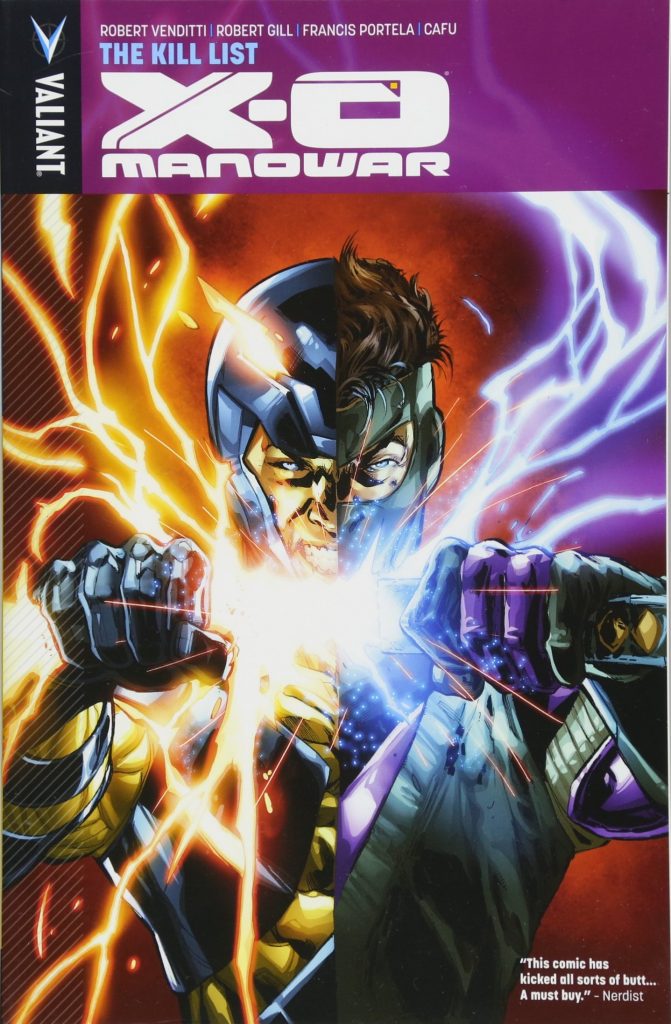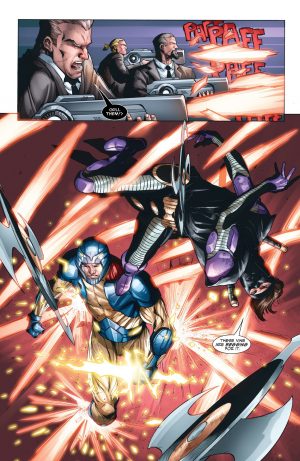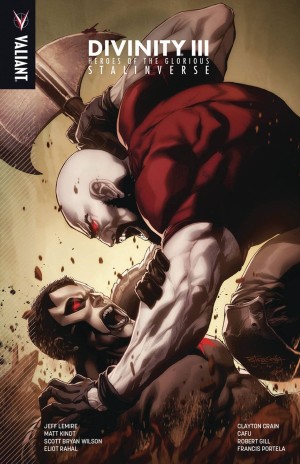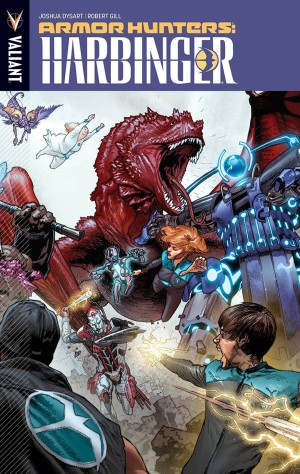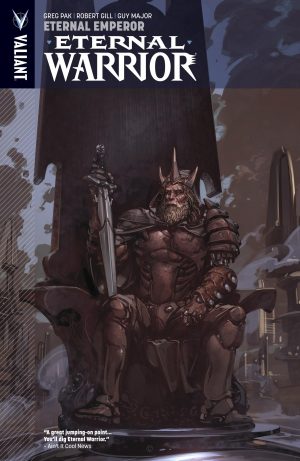Review by Frank Plowright
When X-O originally dealt with the alien Vine attempting to invade Earth, Robert Venditti came up with a neat and original solution for peace (see Planet Death). It left the Vine race polarised, with those on the home planet content, and those remaining on Earth, along with their almost human allies, still plotting to take the planet over. Exodus revealed that one of the most fanatical Vine enemies, Commander Vargosh Trill, remained at large after the failed invasion. He’s so important to the events of The Kill List that Venditti provides a chapter relating Trill’s background as a prologue, detailing a driven man blinded by ambition and overcome by jealousy at Aric having been selected by the Shanhara armour.
From the Earth authorities’ viewpoint, equally as troublesome as Trill are his ideological allies able to pass for human, undetectable until they choose to reveal themselves. Or, that would be the case, had one of them not decided that taking over the Earth wasn’t in his future, someone who knows where the highly placed double agents are. Hence the kill list. As much as he’d like to believe otherwise, Aric is aware he needs help, leading to an uneasy alliance with Ninjak, a man for whom assassination by stealth is a way of life. Their lively missions are contrasted with scenes of tension between the peaceful Vine, camped next to the humans they once enslaved, both communities under Aric’s charge.
Robert Gill draws most of the book, supplying some great pin-up pages. The spidery Ninjak and invulnerable Aric taking fire on the sample art is an example, but it could equally have been Aric descending to Portugal, the arrival of the Armorines, or Aric flying over the sea. That’s not what makes Gill ideally suited to X-O, though. That’s because he combines the pin-ups with the unglamorous work of telling the story, always clearly and always interestingly. Francis Portela illustrating the Trill prologue does so more decoratively, filling in the backgrounds with greater detail, but that’s a different type of story, requiring a different approach.
Throughout the series it’s been noted that Aric’s armour has a form of intelligence, and it’s never been explained why the Vine named it Shanhara. A bonus story supplies that explanation. It’s nicely drawn by Cafu, but melodramatic to begin with and improbable as it continues, disclosing why the entire Vine religious culture is one of worship and reverence for Shanhara.
Back in the main feature, Venditti is far better. His focus on Aric and Ninjak is deceptive, and it’s other events that eventually have greater importance. Trill is a more formidable opponent than credited, and underestimating him and taunting him has its price. This is cleverly structured, and feeds into a story that keeps changing emphasis. As soon as it’s settled into one format, Venditti pulls a switch and it becomes something else, which is thrilling. Unfortunately that’s a policy followed until the end, a cliffhanger with more to follow in Long Live the King. Alternatively both this and that are collected in volume five of the oversize hardcovers X-O Manowar Deluxe Edition.
